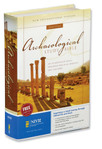In this series of posts, I’ve been giving a brief sketch of the history of the study Bible. We began with the first English study Bible, the Geneva Bible of 1560, and considered the fact that it met needs that were keenly felt at that point in history. It was highly successful, but the sectarian nature of its marginal notes made it as unpopular as it was popular, and there was a bit of backlash against printing Bibles with explanatory notes. We next looked at the Scofield and Thompson Chain Reference Bibles, both of which were published near the turn of the twentieth century. These two study Bibles which are still published today forever demonstrated the effectiveness of the study Bible format. Today we look at the latter decades of the twentieth century to the present, when a dizzying array of study Bibles have been introduced.
It started as a trickle and eventually became a flood. The Oxford Annotated Bible, based on the text of the RSV and written for an ecumenical audience, was introduced in 1962 and quickly became a standard text in many university religious studies programs. The Dake Study Bible appeared in 1963, with marginal notes written from a Pentecostal perspective and based on the text of the KJV. The Ryrie Study Bible, written by dispensational theologian Charles Ryrie, used the text of the NASB and became something of an heir-apparent to the venerable Scofield Bible. Then, in 1986, Zondervan released the NIV Study Bible, and everything changed.
The NIV Study Bible was the first study Bible (with the exception of the original Geneva Bible) which was explicitly branded as belonging to a particular translation. Now, much of the impetus behind some of the other study Bibles I’ve mentioned was to offer a study Bible for those who favored a modern translation over the KJV, but the NIV Study Bible actually made the translation central to its brand identity. This created a kind of synergy in which the growing popularity of the NIV drove adoption of the study Bible, and the study Bible gave buyers another reason to choose the NIV translation.
The notes in the NIV Study Bible were written from a broadly evangelical viewpoint, which meant it could be used by Protestants from a wide variety of denominational backgrounds. Again, that helped validate and strengthen the broad appeal of the translation itself.
The NIV Study Bible became a runaway success, and it didn’t take long for other publishers (and Zondervan itself) to try to duplicate that success. Some have tried to do so by appealing to a broad market, others have focused on a specific audience, and still others have experimented with study Bibles aimed at specific tasks or interests.
First, there are the translation-branded study Bibles which seek to do for those translations what the NIV Study Bible did for the NIV. These include the ESV Study Bible, the NLT Study Bible, and the HCSB Study Bible. While each has its own distinctives, they all are written from a broadly evangelical point of view.
Then there are study Bibles geared toward specific religious groups, such as the Catholic Study Bible, Jewish Study Bible, Reformation Study Bible (Calvinistic/Reformed), Fire Bible (Pentecostal/Charismatic), and others aimed at Lutherans, Wesleyans, etc. These study Bibles are typically printed with the translations most favored by the groups they target, but the translation itself is not the basis on which these study Bibles are marketed.
Finally, there are study Bibles which focus on specific Bible study tasks or interests. For example, the Life Application Study Bible has notes aimed at helping readers apply each passage to their own lives. The Apologetics Study Bible is focused on providing answers to difficult questions and challenges which may arise from a given passage. The Archaeological Study Bible offers information about the historical background of a given passage and includes appropriate images and illustrations. Where most study Bibles offer general explanatory information about a passage, these task-oriented study Bibles are more specialized tools.
Not too long ago, the market seemed to be glutted with study Bibles aimed at surprisingly narrow groups of people. There were study Bibles aimed at people with certain occupations or hobbies, people of specific genders and age groups, etc. I think this ever-increasing specialization of the study Bible has died down some in recent years, and that’s probably a good thing. Still, the effectiveness of the study Bible format is demonstrated by the fact that publishers have tried to use it to get very narrow demographics to become more engaged in reading the Bible. I imagine we’ll continue to see publishers release new variations of the study Bible from time to time in order to see what sticks.


